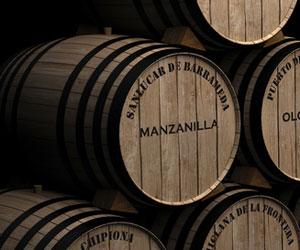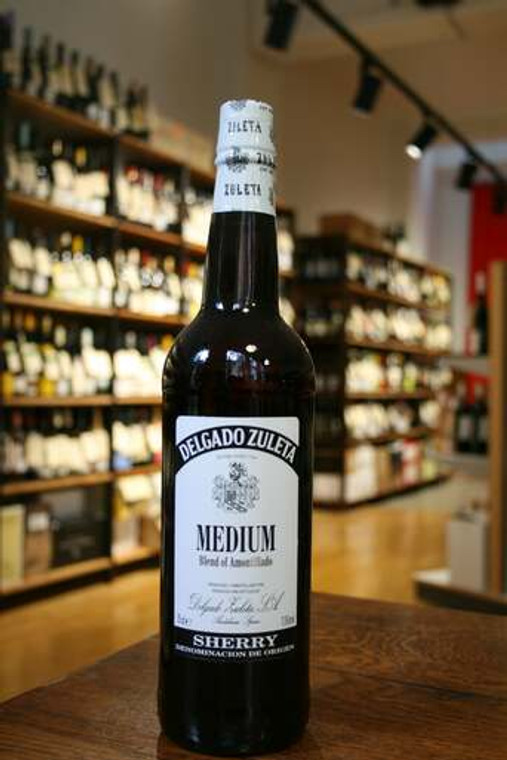
"With a crystal brilliant amber colour, it displays a very intense nose, with hints of caramel and nuts. In the mouth, it is slightly sweet, well-balanced and full-bodied."
Delgado Zuleta
Delgado Zuleta is the oldest winery in the Marco de Jerez region. Its origins go back to the XVIII century and the oldest legacy found in the company’s extensive archive dates from 1719. In 1744 the Cargador a Indias, 1st Knight of the Calatravas Order and Perpetual Alderman of Sanlúcar, Mr Francisco Gil of Ledesma and Sotomayor, started up this wine-growing business. Only four years later, he presented a project to the Cabildo de Sanlúcar to establish a Sanlúcar-based company involved in trading with America.
XIX

The company continued under the name of Gil de Ledesma heirs until late XIX century when Dolores Ñudi, one of the direct descendants, married Don José María Delgado y Zuleta, a wartime sailor who arrived in the port of Sanlúcar de Barrameda, leaving behind his military career, to run the wine-growing business. The company was renamed after him and his full name became the company’s trade mark. At that time the company underwent important growth to the point of becoming suppliers to the Royal House of Their Royal Highnesses Alfonso XIII and Victoria Eugenia.
XX

Upon the death of José María Delgado y Zuleta, his son Tomás Delgado Ñudi took on the business which then was renamed as “Hijo de José Delgado Zuleta S.A.” and registered in 1955 as a public limited company. It was on the 24th of June of 1974 when the company adopted the same trade mark it has today: Delgado Zuleta S.A. Four years later, the merger between the company and the Sanlúcar-based winery Rodríguez La-Cave S.A took place although the company retained the same name.
Palomino
Sanlucar de Barrameda
Sanlucar de Barrameda, a historic coastal town in Andalucia, is the home of refreshing, sea-scented Manzanilla Sherry. The town's humid, maritime air creates an ideal environment for the development of flor yeasts – the secret behind Manzanilla's distinctive taste and aroma.
The Manzanilla DO (Denominación de Origen), created in 1933, covers exactly the same geographical area as the Jerez DO and the Palomino Fino grapes that go into the base wine can be grown anywhere in the Jerez viticultural area. What separates the two is the all-important barrel maturation stage, which must take place in Sanlucar.

Located on the left bank of the Guadalquivir estuary, Sanlucar de Barrameda is the northernmost point of the famous "Sherry Triangle", which is completed by El Puerto de Santa Maria (24km/15 miles south, along the coast) and Jerez de la Frontera (24km/15 miles southeast and inland).
Sanlucar's particular location was critical in the development of the Manzanilla style of Sherry for two reasons. The first is the moist seaside air here, which both encourages prolific flor growth and imparts a gently saline note to the wines.
Proximity to the Atlantic means that both summer and winter are less harsh here than in Jerez de la Frontera, so the heat-sensitive flor can survive all year round. This both increases the yeasty, fresh-bread character of the wine and imparts distinctive notes of almonds and camomile ("manzanilla" in Spanish).
The flor also continuously protects the wine from oxygen, preventing it from developing into an oxidative Amontillado or Oloroso style. If the wine is left to age for so long that the flor does eventually die, the resulting wine is known as "Manzanilla Olorosa" and then a "Manzanilla Pasada".
The second reason relates to Sanlucar's strategic value as a port. Not only does the town sit at the very center of Spain's (relatively short) stretch of Atlantic coastline, it also happens to be just 72km (45 miles) downstream from Seville, Andalucia's ancient capital.
This made it an obvious base for Spain's explorers to set out on their voyages during the Age of Discovery (both Columbus and Magellan launched voyages from the town), and later as a key transatlantic trading post.
As transatlantic trading burgeoned, so Sanlucar became increasingly important. Vast quantities of wine were stored there, and over time the traders observed a subtly different style of wine emerging – the style we now know as Manzanilla.








